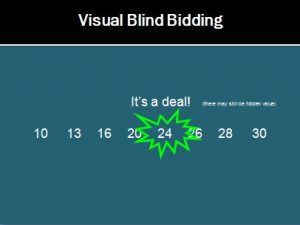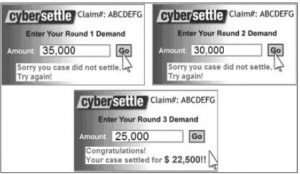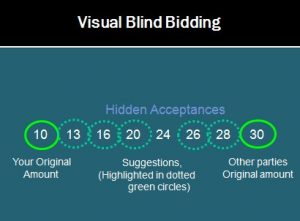Automated negotiation is where parties give their respective bids and if they are within a pre-determined rang, a deal is struck. Different methods can be used by changing this basic blind bidding process to best suit the needs of the parties.

“Leo Baekeland sold the rights to his invention, Velox photographic printing paper, to Eastman Kodak in 1899. It was the first commercially successful photographic paper and he sold it to Eastman Kodak for $1 million. Baekeland had planned to ask $50,000 and to go down to $25,000 if necessary, but fortunately for him, Eastman spoke first.” (Asimov, 1982)
You’d be laughing all the way to the bank were you Leo in the above case. However, Kodak would have cursed his luck had he known what Leo would have settled for. Thankfully, we’ve a tool today, which would obliterate situations like these, called Automated Negotiation.
Automated negotiation is a form of Online Dispute Resolution. It can be used only for negotiation also, without any “dispute” having arisen. This method finds its roots in 90’s when a negotiation between two parties wasn’t reaching anywhere as the parties kept throwing offers willy nilly. They finally decided that they’re going to write their best prices on a piece of paper and give it to the court clerk. If the difference was less than 5,000, the clerk would give a thumbs up and they’ll split the difference. Amounts were written, chits exchanged; and, Voila! They struck a deal. Slowly, the court clerk was replaced by the computer.
The process is as follows:
- The party logs on to the website and submits the claim, specifying the deadline period (usually 30 – 60 days).
- It then emails this to the other party asking for consent.
- Once the consent is given, the bidding process begins.
- Different websites follow different bidding processes. All require them to set a parameter (such as 10-20%) of their bids. (Source)
Double Blind Bidding: Both parties submit their offers (which is confidential) and a deal is struck only if they are within a pre-defined range of each other. The midpoint of the difference is the accepted deal (Refer to the image below)
Visual Blind Bidding: In this, the parties submit their offers (also confidential). Based on this, the computer generates a set of suggestions which the party can accept. This process goes on for a certain number of rounds where the accepted amount is kept hidden. When the accepted values are within a certain “zone”, then the software determines the best possible amount. If the same suggestion is selected, then it is automatically finalized.

This process is being used extensively for insurance and commercial claims in US and UK. Cybersettle.com alone has solved about 200,000 cases till date, representing $1.46 billion in settlement. It definitely has a huge potential in India. (Source)
The parties do not compromise their future position as the amount is not disclosed. They don’t beat around the bush but get straight down to business, saving immense amount of time and money. The problem of any domination also does not occur here. The best part about this is that the ego of the parties do not get in the way of the settlement, nor can there be any manipulation.
[frontpage_news widget=”553″ name=”Latest Post”]






